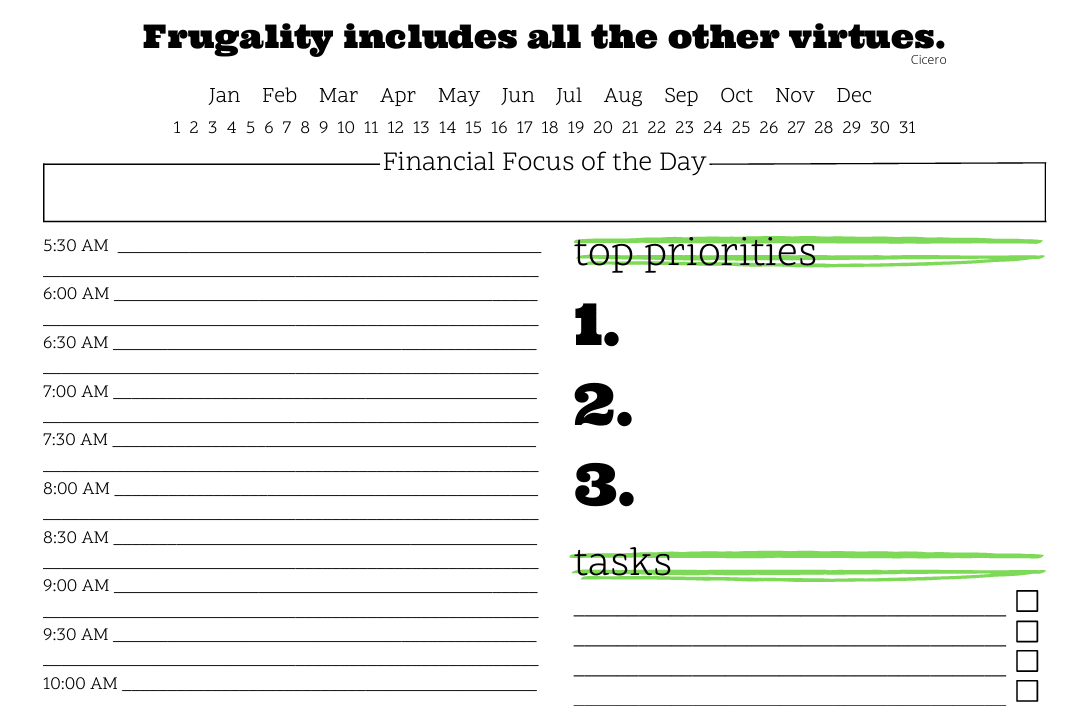This article may contain references to products or services from one or more of our advertisers or partners. We may receive compensation when you click on links to those products or services. Nonetheless, our opinions are our own.

Updated by Albert Fang
Are you looking to launch a business blog but don’t know where to start? Look no further! In this step-by-step guide, we will walk you through the process of launching a successful blog for your business. From understanding the concept of a business blog and its key benefits, to selecting a suitable blogging platform, identifying your niche, and creating engaging content that is optimized for search engines, we’ve got you covered. We’ll also discuss how to promote your blog and reach a wider audience using social media and email marketing strategies. By the end of this guide, you’ll have all the tools needed to launch a successful business blog that can benefit your brand in numerous ways!
- Understanding the Concept of a Business Blog
- Laying the Groundwork for Your Blog
- Identifying Your Blog’s Niche
- Naming Your Blog and Securing Your Domain
- Setting Up and Designing Your Blog
- Developing Your Blog Content Strategy
- Writing Your First Business Blog Post
- Promoting Your Blog to Reach a Wider Audience
- How Can Blogging Benefit Your Business?
- Conclusion
- Recommended Reads
Understanding the Concept of a Business Blog
A business blog represents a potent tool for content marketing and brand building in the digital landscape. By leveraging blogging, businesses can offer valuable information and insights to their customers, establishing credibility and expertise within their industry. Moreover, regular blog posts contribute to search engine optimization (SEO) efforts, ensuring better visibility in search results. Additionally, a business blog plays a pivotal role in generating leads and potential customers. It serves as a medium for small business owners and new bloggers to showcase their writing skills and share their expertise. Understanding the concept of a business blog is an important part of any effective content marketing strategy.
The Role of Blogs in Today’s Business World
Effective blog posts play a crucial role in today’s business world. They provide businesses with a platform to effectively communicate with their target audience, fostering engagement and interaction. By sharing valuable insights and information, businesses can establish themselves as thought leaders in their industry. Moreover, blogs have the ability to drive website traffic, increase brand awareness, and generate leads. They offer a space for businesses to share new ideas, products, and promotions, thereby keeping their audience informed and engaged. For smaller businesses, blogs can be a cost-effective and simple way to implement content marketing strategies. In addition, blogs are an effective way for new bloggers to showcase their writing skills and establish a presence online. As part of a comprehensive business strategy, blogging can provide long-term benefits and should be considered an important part of any marketing plan.
Key Benefits of Launching a Business Blog
Launching a business blog offers numerous key benefits that can greatly impact your brand. One of the major advantages is the ability to build brand authority and establish trust with your customers. By consistently publishing high-quality content, you can showcase your expertise, products, and services, positioning yourself as an industry leader. Additionally, a business blog provides valuable content that can be repurposed for social media marketing and email marketing campaigns, expanding your reach. Furthermore, having a blog can improve your search engine rankings, driving organic traffic to your website and increasing visibility. Finally, a well-crafted business blog can differentiate your brand from competitors, attracting new customers and fostering long-term relationships.
Laying the Groundwork for Your Blog
Selecting a suitable blogging platform is crucial for the success of your business blog. It provides the foundation for your content marketing efforts and determines how your blog will be presented to your audience. When choosing a platform, consider factors such as user-friendliness, customization options, and integration with other tools. Estimating the costs of starting a blog is an important part of your planning process. This helps you budget effectively and determine the resources you will need. Consider expenses such as hosting, domain registration, themes/plugins, and professional services. Planning your blog content calendar is an effective way to ensure consistent and relevant posts. It helps you stay organized and provides a roadmap for creating new content. Setting up an editorial calendar can further assist you in managing your blog. It allows you to schedule posts, assign deadlines, and collaborate with your team. Creating a mission statement for your blog clarifies your objectives and target audience. It serves as a guiding principle for your content creation and helps you stay focused on your goals.
Selecting a Suitable Blogging Platform
When it comes to selecting a suitable blogging platform, there are several factors to consider. One important aspect is the ease of use, as you want a platform that is user-friendly and intuitive. Additionally, you should look for platforms that offer a variety of design options and customization features, allowing you to create a blog that reflects your brand’s identity. Another crucial consideration is mobile device support, as this ensures that your blog reaches a wider audience. Moreover, it is essential to choose a platform that offers good SEO optimization and social media integration, as these features can significantly impact your blog’s visibility and reach. Lastly, when making your decision, think about your long-term blogging goals and scalability. Take the time to research different platform options, comparing their features and pricing, to find the best fit for your needs.
Estimating the Costs of Starting a Blog
When starting a blog, it’s crucial to estimate the costs involved. Consider expenses such as domain name registration, hosting, and design. Additionally, factor in potential costs for content creation, marketing, and optimization. Take the time to research different website builders and blogging software, along with their associated costs. Comparing pricing plans, such as monthly, annual, or subscription-based options, can help you choose the best fit for your budget. It’s important to plan your blog budget based on your business’s financial resources and goals. By considering these factors, you can ensure that you have a clear understanding of the costs involved in launching and maintaining a successful blog.
Identifying Your Blog’s Niche
Identifying your blog’s niche is a crucial step in launching a successful business blog. To define your niche, consider your personal interests, expertise, and target audience. Conduct thorough research to understand your audience’s preferences, needs, and relevant keywords. Evaluating the potential profitability of your niche through keyword research is also important. It’s essential to strike a balance between your personal passion and the commercial potential of your chosen niche. Additionally, keep in mind the long-term sustainability and audience engagement of your blog when making this decision. By choosing a well-defined niche, you can attract a specific audience and establish yourself as an authority in your industry.
Defining Your Interests and Expertise
To establish a successful business blog, it is crucial to define your interests and expertise. Start by identifying your personal interests, skills, and knowledge that can be translated into compelling blog content. Assess your level of expertise and your ability to provide valuable insights to your audience. Consider your unique perspective, experiences, and industry-related topics of interest. Align your blog content with your personal brand, mission, and the needs of your target audience. Explore different content ideas, formats, and topics that are related to your interests and expertise. By doing so, you can create engaging and informative blog posts that resonate with your audience and position yourself as an authority in your field.
Researching Your Target Audience
In order to effectively launch a business blog, researching your target audience is an important part of the process. By identifying your target audience’s demographics, interests, online behaviors, and pain points, you can tailor your content to meet their needs. Conducting keyword research will help you understand how your audience searches for information and their content preferences, allowing you to optimize your blog accordingly. Analyzing your competitors’ target audience and content strategy can also provide inspiration and insights. Engaging with your target audience on social media, forums, and online communities is a great way to build relationships and understand their needs better. Additionally, using audience research tools can provide valuable insights into your target audience’s preferences and help inform your content strategy.
Evaluating the Profitability of Your Niche
To evaluate the profitability of your niche, it is crucial to conduct keyword research and identify relevant, high-demand keywords. Analyze search volume, competition, and potential traffic for these keywords. Additionally, consider affiliate marketing opportunities, potential sponsorships, or collaborations within your niche. Assess the potential audience size, social media engagement, and online presence of your niche to gauge its profitability. Furthermore, evaluate your blog’s potential monetization strategies, such as ads, sponsored content, or online store integration. By thoroughly assessing these factors, you can determine the profitability of your niche and make informed decisions to maximize the success of your business blog.
Naming Your Blog and Securing Your Domain
Choosing the right name for your blog is an important part of your content marketing strategy. It should reflect your brand and resonate with your target audience. Conduct keyword research to find relevant keywords that can be incorporated into the name of your blog. Securing your domain name is crucial to establishing your online presence. Take the time to consider social media handles that align with your blog name for consistency across platforms. When registering your blog domain, it is recommended to go with a reputable domain registrar. By following these simple steps, you can ensure that your blog has a memorable name and a strong online identity.
Tips for Choosing an Effective Blog Name
When choosing a blog name, there are several important factors to keep in mind. Firstly, it’s crucial to keep your blog name simple, memorable, and easy to spell. This will make it easier for your audience to remember and share your blog with others. Additionally, reflecting your blog’s mission statement in the name can help convey the purpose and theme of your content. When considering your target audience, using keywords related to your blog’s content can improve search results and attract the right readers. Avoiding numbers, hyphens, or special characters in your blog name will ensure it is easily accessible and professional. Finally, it’s essential to research your blog name to ensure it is not already taken or trademarked. By following these tips, you can choose an effective blog name that resonates with your target audience and sets the foundation for your online presence.
Registering Your Blog Domain
When it comes to registering your blog domain, there are a few important factors to consider. First, you’ll want to choose a domain name extension that best suits your blog, such as .com, .org, or .net. It’s also crucial to compare domain registration prices and select a reliable domain registrar. During the registration process, make sure to provide accurate and up-to-date contact information. Additionally, consider domain privacy protection to keep your personal information private. To maintain ownership of your blog domain, it’s essential to renew your domain registration annually. By following these simple steps, you can secure your blog domain and establish your online presence with confidence.
Setting Up and Designing Your Blog
Setting up and designing your blog is an important part of launching a business blog. One of the first steps is to select a blog template that represents your brand and provides a good user experience. Customize the design by choosing colors, fonts, and layout that match your brand identity. It’s also crucial to include essential blog pages like About, Contact, and Privacy Policy to provide important information to your audience. Ensure a responsive and mobile-friendly user experience by optimizing your blog design for mobile devices. Another effective way to improve user experience is to use internal links within your blog design to guide visitors to relevant content. By following these simple steps, you can create a professional and visually appealing blog that resonates with your target audience.
Selecting a Blog Template that Represents Your Brand
When it comes to selecting a blog template that represents your brand, there are several factors to consider. First and foremost, choose a template that aligns with your brand’s style, tone, and target audience. This will ensure a cohesive and consistent look throughout your blog. Additionally, take into account the ease of use and customization options of the template. You want a template that allows you to make changes and modifications without much hassle. Another important aspect is the template’s mobile responsiveness. With the majority of internet users accessing content through their mobile devices, it’s crucial that your blog looks great and functions well on smartphones and tablets.
Moreover, look for a blog template that supports key features such as social media integration, search engine optimization (SEO), and email marketing. These features will enable you to effectively promote your blog and reach a wider audience. It’s also a good idea to test out different templates before making a final decision. This way, you can ensure that the template meets both your design and functionality requirements. Lastly, draw inspiration from successful blogs in your niche. Take note of the design elements they use and how they incorporate them into their overall branding strategy. By selecting a blog template that represents your brand effectively, you’re setting yourself up for success in the long run.
Deciding on Essential Blog Pages
When launching a business blog, it is crucial to decide on the essential blog pages that will provide important information to your audience. One of these pages is the About page, which introduces yourself, your blog, and your mission statement. Additionally, a Contact page should be included to give your audience a way to reach out to you. Another essential page is the Privacy Policy, where you inform your audience about your website’s data collection and usage practices. Depending on the purpose of your blog, you may also want to consider additional pages such as Services or Products. To ensure easy access, organize your blog pages in a user-friendly navigation menu. Organizing your blog pages this way is an effective way to provide valuable information and enhance the user experience.
Optimizing Your Blog for Search Engines
To optimize your blog for search engines, it is crucial to perform keyword research and identify target keywords relevant to your blog content. Incorporating these keywords into your blog posts, titles, headings, and meta descriptions will improve your blog’s visibility in search results. Another important part of optimization is using internal links to guide search engine crawlers to important pages on your blog. Additionally, optimizing your blog’s loading speed by compressing images, minifying code, and enabling caching can enhance user experience and improve search engine rankings. Lastly, regularly updating your blog content is a great way to keep it fresh and relevant, attracting both search engines and readers. Remember, effective optimization is a key component of any successful business blog.
Developing Your Blog Content Strategy
Developing an effective blog content strategy is crucial for the success of your business blog. Start by brainstorming engaging blog topics that resonate with your target audience. This will ensure that your content is relevant and interesting to your readers. Research related keywords and strategically incorporate them into your blog content to improve search results and attract organic traffic. Creating an editorial calendar will help you plan, organize, and schedule your blog posts, ensuring a consistent flow of new content. Experiment with different types of blog posts, such as listicles, how-tos, and case studies, to keep your content diverse and captivating. Remember to consistently deliver high-quality, relevant content to build your audience and establish your blog’s authority in the industry.
Brainstorming Engaging Blog Topics
To brainstorm engaging blog topics, start by identifying the interests and needs of your target audience. Consider addressing their pain points, answering common questions, or providing valuable solutions through your blog topics. Draw on your personal experiences, expertise, or research to generate unique and valuable ideas. Stay updated with industry trends, news, and events to develop timely and relevant blog topics. Utilize social media, online forums, keyword research, and audience feedback to generate new and fresh blog ideas. Remember, creating engaging content is an important part of content marketing. By following these steps, you can create a great example of effective blog topic brainstorming.
Creating an Editorial Calendar
Creating an editorial calendar is an essential part of effective content marketing. By planning your blog content in advance and setting goals, you can ensure a consistent posting schedule and stay organized. Consider important dates, events, or seasons relevant to your blog niche when scheduling content to maximize its impact. Use your editorial calendar as a visual guide to track your progress and ensure that you are meeting your blogging goals. By scheduling blog posts, including writing, editing, and publishing, you can streamline your workflow and manage your time effectively. Whether you are a beginner or an experienced blogger, having an editorial calendar is a great way to stay on track and consistently deliver valuable content to your audience.
Writing Your First Business Blog Post
Starting your business blog post with a captivating introduction is essential to engage your readers right from the beginning. Remember to use relevant keywords throughout your post for search engine optimization, as this will help improve your blog’s visibility in search results. Structuring your blog post with headings and subheadings makes it easy to read and navigate, allowing your readers to find the information they’re looking for quickly. Including internal links to other relevant blog posts or pages on your website not only keeps your readers engaged but also helps improve the overall SEO of your blog. Lastly, ending your blog post with a clear call-to-action guides your readers to the next step, whether it’s signing up for your newsletter, making a purchase, or exploring more of your content.
The Importance of Keyword Research in Blog Writing
Keyword research plays a vital role in the success of your business blog. It helps you gain valuable insights into what your target audience is searching for, allowing you to create content that aligns with their interests and needs. By incorporating relevant keywords into your blog posts, you can improve your search engine rankings and increase visibility in search results. Tools like Google Keyword Planner can assist you in identifying keywords with high search volume and low competition, enabling you to optimize your content effectively. Additionally, focusing on long-tail keywords can help you target specific topics and attract more organic traffic. It’s crucial to regularly update your keyword strategy based on search trends to keep your blog content relevant and engage your readers.
Crafting an Engaging Blog Post Title
Crafting an attention-grabbing blog post title is crucial in capturing your readers’ interest and encouraging them to click. To enhance search engine visibility, it’s important to incorporate relevant keywords in your title. Power words, numbers, and questions can create intrigue and curiosity, enticing readers to delve into your content. Experimenting with different title formats, such as listicles, how-tos, and guides, can appeal to various types of readers. However, it’s essential to steer clear of clickbait titles that overpromise and underdeliver, as this can lead to a negative user experience. By crafting compelling blog post titles, you can significantly increase the chances of attracting and retaining an engaged audience.
Writing High-Quality, SEO-Optimized Content
Creating content for your business blog that provides value, answers questions, and solves problems for your target audience is crucial. To enhance search engine visibility, use relevant keywords naturally throughout your content without keyword stuffing. Optimize your meta tags, including the meta title and meta description, to improve your blog’s ranking in search results. Formatting your content with headings, bullet points, and short paragraphs makes it easy for readers to consume. Remember to proofread your content meticulously to maintain credibility. This ensures that your blog content is not only high-quality but also SEO-optimized. By following these simple steps, you can attract more organic traffic and establish your blog as an authoritative source of information in your niche.
Incorporating Visual Elements in Your Blog Post
Incorporating visual elements in your blog post is an effective way to enhance the overall user experience and make your content more engaging. Including relevant images, infographics, and videos can not only support your points but also break up long blocks of text, improving readability. To optimize these visual elements, make sure to compress images, add alt text, and use descriptive file names for better search engine visibility. Screenshots, graphs, and charts can further enhance your blog post by providing visual representations of data or step-by-step processes. Additionally, ensuring that your visual elements are mobile-friendly is crucial as many users access blogs from their mobile devices. By following these simple steps, you can create visually appealing and informative blog posts that captivate your audience.
Promoting Your Blog to Reach a Wider Audience
To maximize the reach of your business blog, it’s crucial to promote your content effectively. One way to do this is by sharing your blog posts on social media platforms like Facebook, Twitter, and LinkedIn. Engaging with your audience through comments, questions, and sharing relevant content can also help attract a wider audience. Building an email list and utilizing email marketing strategies such as newsletters and campaigns is another effective way to promote your blog posts. Collaborating with other bloggers, influencers, and industry experts through guest posts, interviews, or co-created content can further expand your reach. Additionally, implementing search engine optimization techniques, like optimizing your posts for target keywords, can help drive organic traffic to your blog.
To effectively promote your business blog, it’s essential to leverage social media platforms that your target audience frequents. Tailor your content on these platforms to align with your brand, blog posts, and audience interests. Utilize relevant hashtags, keywords, and mentions to increase the visibility of your social media posts in search results. Engaging with your audience by responding to comments, sharing user-generated content, and participating in relevant discussions is an important part of promoting your blog. Additionally, make use of social media analytics to track the performance, audience engagement, and conversions of your posts. By leveraging social media, you can expand your reach and drive more traffic to your business blog.
Strategies for Email Marketing
To effectively utilize email marketing for your business blog, it is essential to implement strategic approaches. Begin by building an email list of interested subscribers through website opt-ins, content upgrades, and lead magnets. This allows you to capture valuable leads for future communication. Segmenting your email list based on audience interests, demographics, or behaviors further enhances the effectiveness of your campaigns. Creating engaging email content, such as newsletters, exclusive content, or blog post summaries, keeps your subscribers informed and interested. Personalization, automation, and A/B testing are vital components for optimizing your email marketing strategy. By monitoring metrics like open rates, click-through rates, and conversions, you can evaluate the success of your campaigns. Implementing these strategies ensures that your email marketing efforts are targeted and yield maximum results.
How Can Blogging Benefit Your Business?
Blogging offers numerous benefits for your business. It establishes your industry authority, boosts search engine rankings, and expands brand reach through repurposing content. Engaging blog posts increase audience engagement and potential conversions while providing a platform for customer feedback and testimonials.
Conclusion
To sum up, launching a business blog can be a game-changer for your brand. It not only helps establish your authority in the industry but also attracts a wider audience and drives traffic to your website. By following this step-by-step guide, you can lay the groundwork for a successful blog that resonates with your target audience and boosts your online presence. Remember to choose a suitable blogging platform, define your niche, secure your domain, and design your blog in a way that represents your brand. Develop a content strategy that includes engaging topics and SEO optimization, and promote your blog through social media and email marketing. With consistent effort and valuable content, your business blog has the potential to bring significant benefits to your brand’s growth and success.

Reviewed and edited by Albert Fang.
See a typo or want to suggest an edit/revision to the content? Use the contact us form to provide feedback.
At FangWallet, we value editorial integrity and open collaboration in curating quality content for readers to enjoy. Much appreciated for the assist.
Did you like our article and find it insightful? We encourage sharing the article link with family and friends to benefit as well - better yet, sharing on social media. Thank you for the support! 🍉
Article Title: How to Launch a Business Blog: A Step-by-Step Guide
https://fangwallet.com/2023/11/10/how-to-launch-a-business-blog-a-step-by-step-guide/The FangWallet Promise
FangWallet is an editorially independent resource - founded on breaking down challenging financial concepts for anyone to understand since 2014. While we adhere to editorial integrity, note that this post may contain references to products from our partners.
The FangWallet promise is always to have your best interest in mind and be transparent and honest about the financial picture.
Become an Insider

Subscribe to get a free daily budget planner printable to help get your money on track!
Make passive money the right way. No spam.
Editorial Disclaimer: The editorial content on this page is not provided by any of the companies mentioned. The opinions expressed here are the author's alone.
The content of this website is for informational purposes only and does not represent investment advice, or an offer or solicitation to buy or sell any security, investment, or product. Investors are encouraged to do their own due diligence, and, if necessary, consult professional advising before making any investment decisions. Investing involves a high degree of risk, and financial losses may occur including the potential loss of principal.
Source Citation References:
+ Inspo
There are no additional citations or references to note for this article at this time.




























![How to Hire Fintech Software Developers [Cost & Factors] fintech software engineers](https://fangwallet.com/wp-content/uploads/2025/03/fintech-software-engineers-270x180.png)















